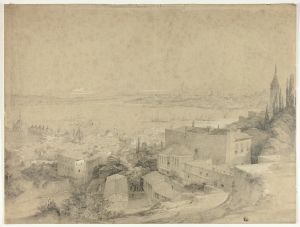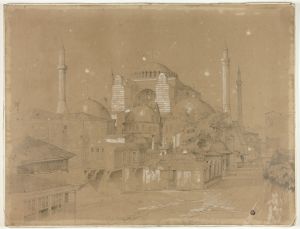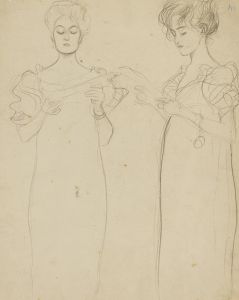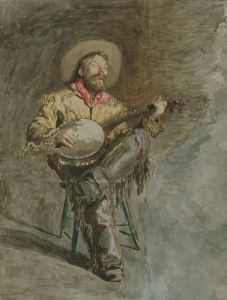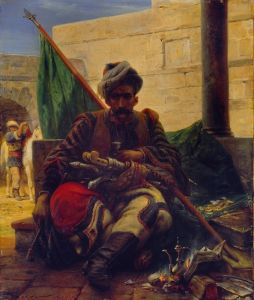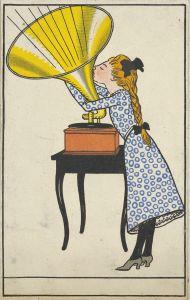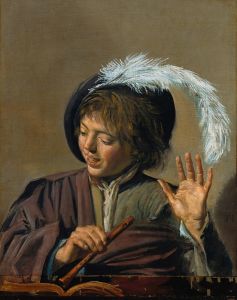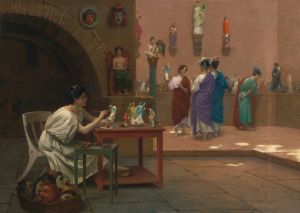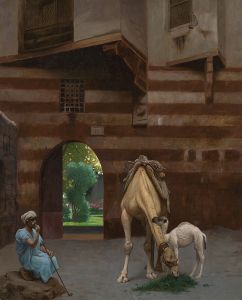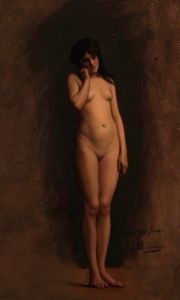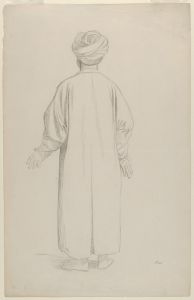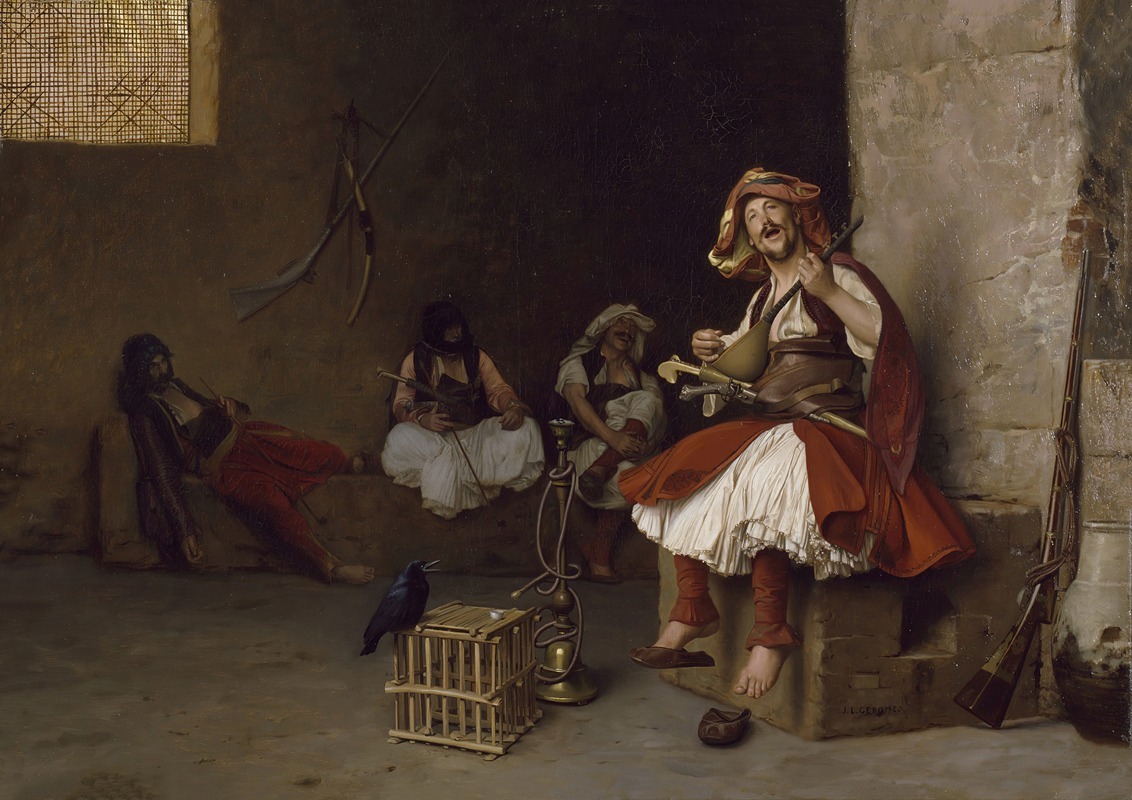
Bashi-Bazouk Singing
A hand-painted replica of Jean-Léon Gérôme’s masterpiece Bashi-Bazouk Singing, meticulously crafted by professional artists to capture the true essence of the original. Each piece is created with museum-quality canvas and rare mineral pigments, carefully painted by experienced artists with delicate brushstrokes and rich, layered colors to perfectly recreate the texture of the original artwork. Unlike machine-printed reproductions, this hand-painted version brings the painting to life, infused with the artist’s emotions and skill in every stroke. Whether for personal collection or home decoration, it instantly elevates the artistic atmosphere of any space.
Jean-Léon Gérôme's painting "Bashi-Bazouk Singing" is a notable work by the French artist, who was renowned for his detailed and historically themed paintings. Gérôme, a prominent figure in the 19th-century academic art scene, was known for his precise and polished style, often focusing on themes from history, mythology, and Orientalism. "Bashi-Bazouk Singing" is one of his works that reflects his interest in the exotic and the culturally diverse subjects he encountered during his travels.
The term "Bashi-Bazouk" refers to irregular soldiers of the Ottoman Empire, known for their lack of discipline and distinctive appearance. These soldiers were often depicted in Western art as colorful and exotic figures, embodying the Western fascination with the East during the 19th century. Gérôme's portrayal of a Bashi-Bazouk in this painting is consistent with his broader body of work, which frequently explored themes related to the Middle East and North Africa.
In "Bashi-Bazouk Singing," Gérôme captures a moment of musical expression, focusing on the figure of a Bashi-Bazouk engaged in singing. The painting is characterized by Gérôme's meticulous attention to detail, evident in the rendering of the figure's clothing, facial features, and the surrounding environment. The artist's skillful use of light and shadow adds depth and realism to the scene, enhancing the viewer's sense of immersion in the depicted moment.
Gérôme's work often reflects the 19th-century European fascination with Orientalism, a term used to describe the depiction of Eastern cultures by Western artists. This fascination was fueled by increased travel and exploration, as well as colonial interests in the region. Gérôme, like many of his contemporaries, was influenced by these trends, and his paintings often depict scenes that blend historical accuracy with imaginative elements.
"Bashi-Bazouk Singing" is a testament to Gérôme's ability to capture the essence of his subjects with both technical precision and a sense of narrative. The painting invites viewers to contemplate the cultural and historical context of the Bashi-Bazouk, while also appreciating the aesthetic qualities of Gérôme's art. His work remains significant for its contribution to the Orientalist genre and its reflection of the complex interplay between Western and Eastern cultures during the 19th century.
While Gérôme's paintings, including "Bashi-Bazouk Singing," are celebrated for their artistic merit, they also invite critical reflection on the ways in which Western artists have historically represented non-Western subjects. The Orientalist perspective, while offering a glimpse into the artist's interpretation of Eastern cultures, also raises questions about the accuracy and implications of such portrayals.
Overall, "Bashi-Bazouk Singing" exemplifies Jean-Léon Gérôme's mastery of academic painting techniques and his engagement with themes of cultural diversity and historical narrative. The painting continues to be appreciated for its artistic qualities and its role in the broader context of 19th-century art history.





